Things You'll Need
Compost
Shovel
Grape Plants
Hose
Hand pruning shears
Trellis, fence, or stakes and wires
Rope
Hoe
Knife

Growing Niagara grapes (Vitis 'Niagara') in a home garden requires a few steps. Grapes need pruning and training, but once you master those tasks, you'll find the harvest worth the effort. Niagara grapes are a white grape, bearing large, sweet fruit suitable for table use, jams, juice and wine. The grapes are very cold hardy, thriving in USDA Plant Hardiness Zones 5 to 7, and will produce vigorously for 20 years or more.
Planting
Step 1

Spread a layer of manure or compost on the soil. Use half a 40-pound bag for each plant. Mix the compost into the soil by digging into the earth with a shovel to a depth of 1 foot. Turn the soil over as you go, and remove any rocks, weeds and dirt clods.
Video of the Day
Step 2
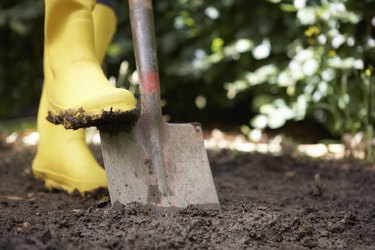
Dig a hole 1 foot deep and 1 foot wide with a shovel. Remove the plant gently from its pot. Set the plant in the hole and spread out the roots. The crown of the plant (where the branches and roots meet) should sit about 1 inch below the soil surface.
Step 3

Fill the hole half-full with water, using a hose. Let the water drain. Push soil into the hole with your hands until the hole is completely filled. Pat the soil firmly in place. Water for 10 to 15 minutes.
Pruning and Training
Step 1
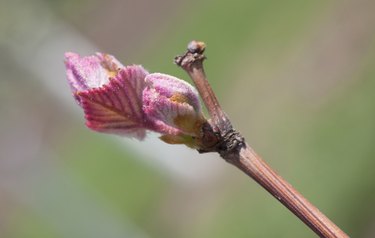
Pinch off all but 2 or 3 of the buds--the little swelling protrusions--on the strongest stem in early spring with your fingers.
Step 2
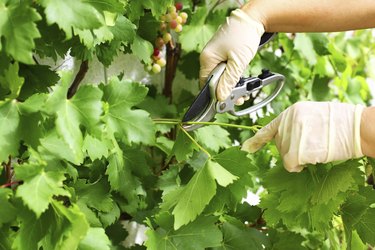
Let the central trunk develop 2 strong canes (branches) when it grows to about 1 foot tall. Tie these canes with string to your fence or trellis so they are growing in opposite directions horizontally. Prune back any other developing canes with pruning shears the second year.
Step 3

Tie 2 more canes 1 or 2 feet higher on your fence as you did the previous spring. You'll have a strong central branch with 4 horizontally growing canes by year three. Continue training the grape vine in this manner every spring until the plant reaches the top of your fence or trellis.
Step 4
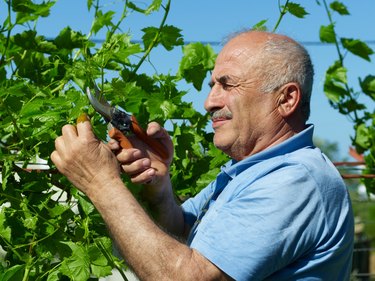
Prune back any other canes consistently, and dispose of all cuttings and fallen leaves.
Caring for Niagara Grapes
Step 1
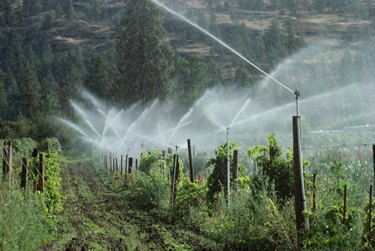
Water grapes with a hose or sprinkler once a week in dry conditions. Water deeply for 15 to 20 minutes.
Step 2

Pull weeds from around the grape plant or hoe lightly.
Step 3
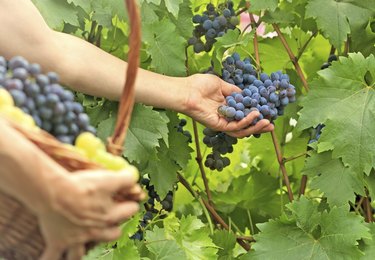
Taste the grapes in mid August to September to see if they are sweet and ripe. Cut ripe grapes off the vine with a sharp knife.
Tip
Plant grapes on a sunny slope away from frost pockets. Choose your trellis system and install it before you plant grapes. Plant grapes against a fence for a low-maintenance solution. Plant grapes at least 8 feet apart, prune regularly, and clean up any fallen leaves or branches. Grapes are prone to diseases and pests, but proper care and good air circulation will prevent most problems. Spray with benoymyl or copper sulfate if necessary. Store picked grapes in the refrigerator.
Warning
Hoeing deeply can damage grapes' shallow roots.
Video of the Day